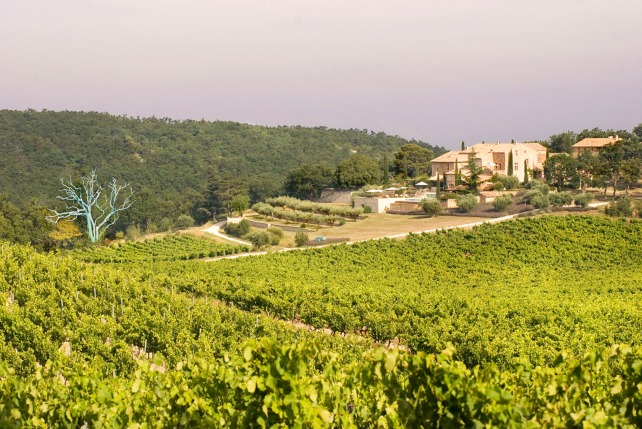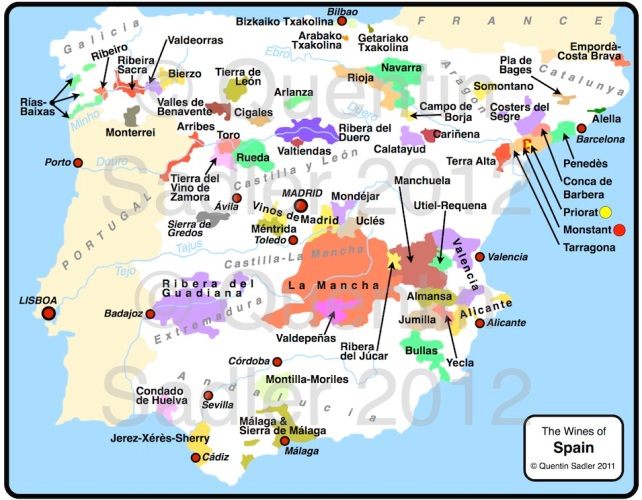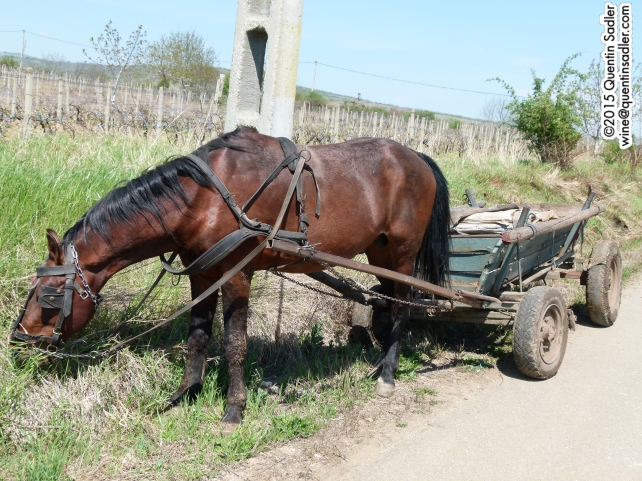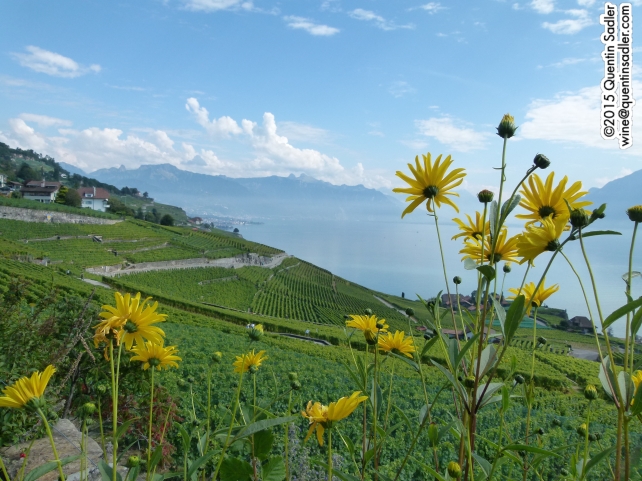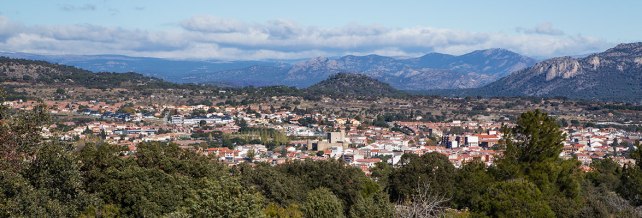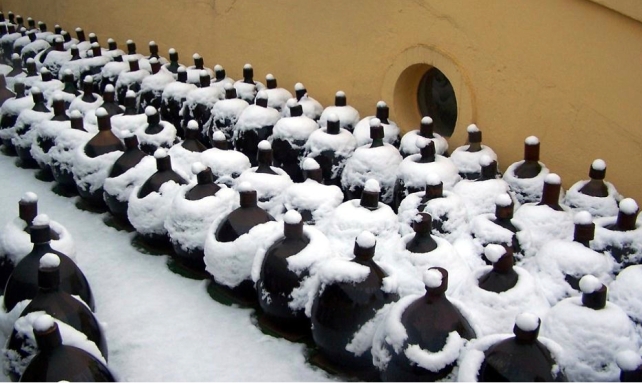I recently had a fascinating experience. I was a wine judge in the Grenache du Monde competition. This was the fifth edition of this competition that solely judges wine made from that most beguiling of grape varieties – Grenache.
I only fell for Grenache’s charms relatively recently in fact, but boy did I fall. Red Grenache wines often have lots of fruit, soft tannins and deliver lots of pleasure. I am also drawn to the delicious whites made from Grenache Blanc and Grenache Gris and the more elegant red styles from cooler places. So, I do seem to now love Grenache in all its guises and so was thrilled to be invited to judge Grenache wines from all over the world. What’s more the competition was in Sardinia, so all in all it was a pretty exciting week.
So, first of all what did we taste? Well, there are at least four Grenache grapes; 2 black grapes, Grenache Noir and Garnacha Peluda as well as the white Grenache Blanc and the pink tinged Grenache Gris. Grenache Noir is the most important of these, it is one of the most widely planted grapes in the world – indeed it might well be the most planted black grape in the world, because there is so much of it in Spain.
On top of that Grenache goes by more than 20 different names, but I only knowingly got to taste examples called; Grenache (in France and the New World), Garnacha (in Spain), Garnatxa (in Catalunya), Tocai Rosso / Tai Rosso (in Veneto, Italy), Cannonau (in Sardinia) and, confusingly, Gamay. In Umbria they call Grenache Gamay, or Gamay del Trasimeno or even Gamay Perugino.
What’s more the competition didn’t just taste wines made from pure Grenache, but as it is frequently used as a blending grape – in Côtes du Rhône and the Languedoc-Roussillon for instance – blends were included in the competition as well, as long as there was at least 60% Grenache in the wine.
There was every style of wine too, dry white, rosé, sparkling, dry red, sweet white and sweet red too.
A total of 684 wines were entered and they came from 8 countries: South Africa, Australia, Spain, France, Greece, Italy, Macedonia and Lebanon. There were 100 of us judges and we divided up into panels of 5, so I did not get to taste all the wines during the judging, but I had a darn good try during the tastings afterwards.
I was very impressed by the overall quality of what I tried and personally awarded some pretty high scores. My fellow judges seem to have agreed with me and there were 104 Gold Medals awarded, 87 Silver and 22 Bronze. Spain was the overall winner with 108 medals – out of 322 wines submitted – France entered 149 wines and gained 51 medals, Italy entered 204 and won 51 as well, while Australia, Macedonia and South Africa all gained 1 medal each.
Everything was tasted blind, so it was reassuring to discover that I had given high marks to some old friends as well as exciting to discover completely new things.
My favourite wines of the competition were:
France

Wine map of France, Chêne Bleu are just north of Avignon and Banyuls is on the coast right by the Spanish border in Languedoc-Roussillon – click for a larger view.
![]() 2010 Abélard
2010 Abélard
Chêne Bleu
Vin de Pays /IGP de Vaucluse
Domaine de la Verrière
Rhône, France
I love what Chêne Bleu does and have written about them here and here, so it was no surprise that this stunning wine received a Gold Medal. It is a biodynamic blend of 85% Grenache and 15% Syrah aged for 18 months in French oak barrels. The vines are grown at around 500 metres above sea level and are between 30 and 40 years old.
There is concentrated fruit, rich herbal characters and a nice touch of spice too. This is a rich, elegant, refined and utterly delicious wine – 95/100 points.
Available in the from £50 per bottle from Justerini & Brooks, Wine Direct and Waitrose Cellar.
For US stockistsclick here.
![]() 2015 Banyuls Premium
2015 Banyuls Premium
Terres des Templiers
AC / PDO Banyuls
Roussillon
France
Banyuls is the closest thing to Port produced in France. It is a sweet fortified red wine made right on the border with Spain, from Grenache grapes and it can be utterly delicious. This is wood aged for 12 months, but still opaque, rich, dark and sugary, much like a good Ruby Port. Blackberry and sugar plums and wild raspberry together with wild herbs, sweet spice and cocoa dominate the aroma and flavours. A lovely style that we do not see enough in the UK, try it with something chocolatey – 93/100 points.
Spain
Spain is always a great wine producing country to go to for value and nothing epitomises that as much as what they do with Grenache, or as they would call it Garnacha or even Garnatxa in Catlunya.
I love what Bodegas San Alejandro do in Spain’s Calatayud region in Aragon. I fell in love with their wines a long time ago whilst staying in the amazing Monasterio de Piedra – it’s a medieval monastery that is now a hotel within a wonderful natural park that contains a series of waterfalls that are the highest in western Europe and it is a magical place. Anyway, it’s near the winery and so the restaurant lists their wines. In fact it was their Baltasar Gracián Garnacha Viñas Viejas that started me on the way to loving Grenache. The wines are so good that they won four Gold Medals in the competition and all the winning wines are well worth trying. Sadly you cannot get them in the UK, but you can order them to be delivered – until Brexit reimposes limits and duty anyway – from the likes of Uvinum and Bodeboca.com.

Wine map of Spain, Aragon with Calatayud and Campo de Borja are between Rioja and Barcelona – click for a larger view
![]() 2013 Baltasar Gracián Crianza
2013 Baltasar Gracián Crianza
Bodegas San Alejandro
DO / PDO Calatayud
Aragon
Spain
60% Garnacha with 40% Syrah aged for 12 months in a mix of French and American oak. It’s a big wine that carries its 15% alcohol very well. Intensely ripe and very generous with plenty of coffee, vanilla, liquorice and earthy tones developing as it ages. A lovely wine that I cannot find in the UK – 91/100 points.
![]() 2013 Baltasar Gracián Reserva
2013 Baltasar Gracián Reserva
Bodegas San Alejandro
DO / PDO Calatayud
Aragon
Spain
70% Garnacha with 30% Syrah aged for 18 months in French oak. Another big wine that carries its 15% alcohol very well. This is soft, rich and spicy with loads of ripe red fruit and coffee and vanilla – 92/100 points.
![]() 2015 Baltasar Gracián Garnacha Viñas Viejas
2015 Baltasar Gracián Garnacha Viñas Viejas
Bodegas San Alejandro
DO / PDO Calatayud
Aragon
Spain
A stunning wine made from 80 year old dry farmed bush vine Garnacha grown in slaty mountain soils at about 800 metres above sea level. It spends 10 months in a mixture of French and American oak barrels and is simply wonderful. Full of flavour,full of life and personality. It is deeply concentrated, mineral, balsamic and liquoricey with a long finish. Great with game – 93/100 points.
![]() 2013 Baltasar Gracián Garnacha Nativa
2013 Baltasar Gracián Garnacha Nativa
Bodegas San Alejandro
DO / PDO Calatayud
Aragon
Spain
This version is made from the oldest and highest vines, 82 year old plants growing at 900 metres. The wine is aged for 12 months in new French oak barrels. They only made 2600 bottles and again it is superbly concentrated, but more smoky, intense and savoury this time, while the finish is silky and refined. Like all their wines, it is big and bold, 15% again, but elegant too in its own way – 94/100 points.
Aragon is a great area for Garnacha production and the wonderful Bodegas Borsao in the Campo de Borja – the Borgias came from there – also won 4 Gold Medals as well as a Silver. Again I cannot find any UK stockists, although Wine Rack used to sell them, but they are also available from the likes of Uvinum and Bodeboca.com.
![]() 2014 Borsao Berola
2014 Borsao Berola
Bodegas Borsao
DO / PDO Campo de Borja
Aragon
Spain
80% Grenache, 20% Syrah grown at 700 metres above sea level and aged 14 months in French barriques. This is a fine, aromatic wine with rich red cherry, some black cherry, liquorice, earth and balsamic notes. The tannins are soft and it is delicious – 92/100 points.
![]() 2013 Borsao Crianza Selección
2013 Borsao Crianza Selección
Bodegas Borsao
DO / PDO Campo de Borja
Aragon
Spain
This 60% Grenache, 20% Merlot and 20% Tempranillo, also grown at 700 metres above sea level and aged 10 months in French and American barriques is a little silver and firmer, with more savoury and dark fruit characters, more classically Spanish perhaps – 92/100 points.
![]() 2013 Borsao Bole
2013 Borsao Bole
Bodegas Borsao
DO / PDO Campo de Borja
Aragon
Spain
70% Grenache with 30% Syrah, made from younger vines and only aged for 3 months in French oak.It is very ripe, very bright with some lovely firm spice and it still got a Gold Medal despite being around €5 in Spain – 91/100 points.
![]() 2015 Borsao Tinto Selección
2015 Borsao Tinto Selección
Bodegas Borsao
DO / PDO Campo de Borja
Aragon
Spain
Another Gold Medal winner, 85% Garnacha, 10% Tempranillo and 5% Syrah and with no oak. This is juicy and delicious with lovely fruit and spice. Robert Parker said this about a previous vintage, which probably says all you need to know; ‘Possibly the single greatest dry red wine value in the world, this is an unbelievable wine’ – in case you didn’t know, Parker – and perhaps other Americans – use the word ‘value’ in that very odd way that jars. I would say is it’s great value. A value to me is a quite different meaning, ho hum – 92/100 points.
For some reason the next one only gained a Silver Medal rather than a gold, but I think it is brilliant and great value for money too:
![]() 2015 Borsao Tres Picos
2015 Borsao Tres Picos
Bodegas Borsao
DO / PDO Campo de Borja
Aragon
Spain
100% Garnacha from 35-60 year old vines and aged 5 months in French oak barrels. This is very intense with bright, ripe, juicy, succulent fruit, floral aromas, spices and a silky, smooth, rounded palate. A wine that always delivers a huge amount of pleasure – 91/100 points.
Perhaps the most highly thought of part of Spain for Grenache based blends – Aragon and Navarra specialise more in pure Grenache wines – is Catalunya with its trio of exciting regions; Priorat, Montsant and the decidedly up and coming Terra Alta, which as you can see on the map is not far from Calatayud. Historically it was rather cut off because of all the mountains, but the Mediterranean ensures the grapes ripen very well, while the stony soils keep vigour down ensuring the grapes are concentrated and flavoursome. My panel judged a whole flight of 11 red wines from Terra Alta and they were very good indeed, some of my favourite wines of the competition came from this flight – Terra Alta is avery exciting wine region and these examples are the best that I have ever tasted.
![]() 2014 Edetària Selecció Negre
2014 Edetària Selecció Negre
Bodegas Edetària
DO / PDO Terra Alta
Catalunya
Spain
This Gold Medal winning wine is a fabulously exciting blend of 60% Garnacha Peluda (Hairy Grenache), 30% Syrah and 10% Cariñena, or Carignan. The vines are over 40 years old and the wine is aged in 500 litre French oak barrels for 12 months, so twice the size of normal barriques, so it softens the wine rather than flavours it. This truly delicious, smooth, rounded, plump, herbal, spicy, mineral, elegant and concentrated, one of my top wines of the whole competition – 94/100 points.
Available to order for delivery into the UK – Brexit permitting – from Decántalo and Uvinum.
![]() 2013 Lafou De Batea
2013 Lafou De Batea
Lafou Celler
DO / PDO Terra Alta
Catalunya
Spain
This is a blend of mainly Garnacha with a little Syrah and Cabernet Sauvignon and it is another stunning wine, again concentration is the hallmark here, with rich cherry fruit, balsamic, liquorice, herbal, spicy characters and minerality and freshness giving the whole thing balance. This is a beautiful wine that I want to enjoy with some slow cooked, garlicky lamb – 94/100 points.
Lafou also make a (much) cheaper wine called Lafou El Sender which is available in Waitrose and Waitrose Cellar for £10.99.
![]() 2014 L’Avi Arrufí Blanco
2014 L’Avi Arrufí Blanco
Celler Piñol
DO / PDO Terra Alta
Catalunya
Spain
This organic white wine is 100% Garnatxa Blanca barrel fermented and aged for 8 months in French oak. It is creamy and gently toasty and smoky,with lots of succulent orchard fruit, herbs and spices.There is enough acid to keep it balanced and refreshing, but at its heart it is all about the texture and mouthfeel. A beautiful white wine, full of character and perfect with a selection of different cheeses – 93/100 points.
Available to order for delivery into the UK – Brexit permitting – from Uvinum.
![]() 2014 Tempus
2014 Tempus
Altavins Viticultors
DO / PDO Terra Alta
Catalunya
Spain
Another amazing wine from this up and coming region. The blend changes every year and I have no idea what the 2014 is, but it includes Syrah, Grenache, Carignan and Merlot. The vines are 30 year old and grown on rocky slopes with low vigour. The finished wine is aged for 10 months in French oak barrels to round it out and soften it. The fruit is very ripe, deep red fruit with some flashes of blacker fruit notes, even some kirsch. There is plenty of spice here too and the oak gives a lovely touch of coffee and cocoa. This is opulent stuff that needs time or decanting – 92/100 points.
Available to order for delivery into the UK – Brexit permitting – from Vinissimus.
Italy
Grenache is so associated with Spain and France that it comes as quite a shock to discover it in Italy. In fact it is grown in three different regions, in the Veneto’s Colli Berici region it is called Tai Rosso, formerly Tocai Rosso. In Umbria they call it Gamay del Trasimeno or Gamay Perugino and like Veneto seem to have grown it there since the mid nineteenth century, having brought it from France.
However, it is Sardinia that really specialises in Grenache. They call it Cannonau and the fact that they grow it, indeed specialise in it, is a reminder of their mediaeval past when the island was conquered by the Crown of Aragon, which was a joint Aragon and Catalan Kingdom that also ruled Valencia, Roussillon, the Balearic Islands, Malta, Sicily, Naples, Sardinia and even parts of Greece from 1162 to 1469, when it became linked with the Kingdom of Castille and eventually came to be called Spain. It is presumed that Aragonese or Catalan settlers took Garnacha grapes with them to Sardinia. Certainly Catalan people did settle there and Catalan is an official language around Alghero to this day.
During my time on Sardinia I tasted some rustic, everyday examples, but then I also enjoyed some Cannonaus that were superbly balanced and fine:
![]() 2015 Neale
2015 Neale
Cantine di Orgosolo
DOC / PDO Cannonau di Sardegna
Sardinia
Italy
This sumptuous wine is a beautifully balanced blend of 85% Cannonau and 15% Bovale. Bovale is name used for two different grapes, both Spanish in origin; Bovale Grande is Carignan / Carineña / Mazuelo, while Bovale Sardo is Rioja’s Graciano. From a linguistic point of view I had hoped that it would turn out to be the Bobal grape of Valencia, but who knows that might have been the name they used – things were less precise and scientific in those days, people seldom knew what the grape actually was, just that they grew it and the local name for it. It’s richly fruity, blackberry and plum, and incredibly smooth with nice savoury earthy touches and soft, sweet tannins – 92/100 points.
![]() 2015 Dicciosu
2015 Dicciosu
Cantine Lilliu
DOC / PDO Cannonau di Sardegna
Sardinia
Italy
I know nothing about this wine, but suspect that its bright red fruit, smooth tannins and juiciness means that it is pure Grenache. It is very elegant though with nice freshness and balance. There is nothing rustic or overworked here, instead it has a pristine quality that is rare in Grenache – 93/100 points.
![]() 2015 Pantumas Rosato
2015 Pantumas Rosato
Cantine Lilliu
DOC / PDO Cannonau di Sardegna Rosato
Sardinia
Italy
Again I know nothing about this wine, except that it was the best rosé that I tasted the whole trip. Delicately scented of rose petals, red cherry and even some blood orange, those flavours follow on to the palate. It is a delicate, fine rosé with elegance and finesse, I loved it – 93/100 points.
![]() 2015 Audarya
2015 Audarya
Audarya
DOC / PDO Cannonau di Sardegna
Sardinia
Italy
I was seriously impressed with this stripped down, acoustic style of wine. There is no oak here, just pristine, bright Grenache fruit that delivers waves of sweet ripe cherries, raspberries, plums and exotic spices. The wine is taut, refreshing and beautifully balanced and yet at heart a simple little thing. Fine wine making indeed and as far as I can see, this is their first vintage – 93/100 points.
So, there you have it, some stunning wines made from members of the Grenache family, or blends that include Grenache. All of these are wonderful wines that certainly captured my imagination whilst I was in Sardinia. All of them have soft tannins, voluptuous fruit, spiciness and drinkability that people like in things like Côtes du Rhône and Châteauneuf-du-Pape, so if you enjoy those, then you will like these too. I hope that you get to try some of them, or perhaps just use the information to try Grenache wines from a wider array of places. If so, do tell us all about them, won’t you?


